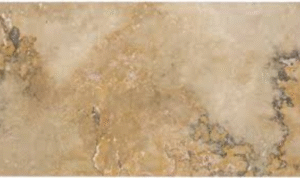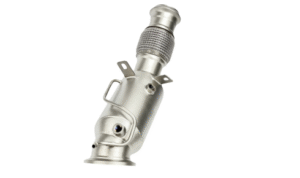
whole house repipe
Plumbing issues can cause significant disruptions in any home. If you’ve been dealing with low water pressure, rusty water, or frequent leaks, it might be time for a repipe. Replacing old or damaged pipes with modern materials like PEX or copper can improve water quality, increase pressure, and prevent future leaks. Whether you need a PEX repipe or a copper repipe, understanding the process and finding the right professionals can make a big difference. This article will cover everything you need to know about repiping your home, including the benefits, process, and how to choose the best repipe plumbers.
What is a Repipe?
Repiping is the process of replacing old, damaged, or corroded pipes in a home with new ones. Over time, pipes made from older materials like galvanized steel or iron can deteriorate, leading to leaks, reduced water quality, and inconsistent water pressure. A repipe involves removing these outdated pipes and installing new ones made from materials such as PEX (cross-linked polyethylene) or copper.
Why Repipe Your Home?
Repiping is essential when your home’s plumbing system starts showing signs of aging or damage. Here are some common reasons why homeowners choose to repipe:
- Low water pressure – Old pipes may have mineral buildup, reducing water flow.
- Rusty or discolored water – This indicates corrosion in the pipes, which can affect water quality.
- Frequent leaks – Small leaks can escalate into major water damage if left untreated.
- Unpleasant taste or odor – This can be a result of rust and buildup in the pipes.
- Water temperature issues – Inconsistent hot or cold water can signal pipe damage.
PEX Repipe vs. Copper Repipe
When it comes to repiping, two of the most popular materials are PEX and copper. Each has its advantages and is suited for different situations.
PEX Repipe
PEX (cross-linked polyethylene) is a flexible plastic tubing that has become popular for residential plumbing due to its affordability and ease of installation.
✅ Cost-Effective: PEX is more affordable than copper, making it a popular choice for whole house repipe projects.
✅ Flexible and Durable: Its flexibility makes it easier to install in tight spaces.
✅ Corrosion-Resistant: PEX does not corrode or develop pinhole leaks like copper.
✅ Quieter: PEX absorbs pressure changes better, reducing noise from water flow.
Copper Repipe
Copper has been a standard plumbing material for decades due to its durability and reliability.
✅ Long Lifespan: Copper pipes can last 50 years or more.
✅ Heat and Pressure Resistant: Copper withstands high temperatures and pressure.
✅ Eco-Friendly: Copper is recyclable, making it an environmentally friendly option.
✅ Bacterial Resistance: Copper naturally resists bacteria growth inside pipes.
Whole House Repipe – When Is It Necessary?
A whole house repipe involves replacing all the pipes in your home’s plumbing system. This is typically necessary when the existing pipes are severely corroded, leaking, or made from outdated materials like galvanized steel.
Signs You Need a Whole House Repipe:
- Persistent low water pressure throughout the home
- Multiple leaks or bursts within a short period
- Discolored water from several faucets
- High water bills due to hidden leaks
- Knocking or banging sounds in the pipes
Repiping the entire house might seem like a big project, but it ensures that your plumbing system is up-to-date, efficient, and leak-free for years to come.
Replumb House – Step-by-Step Process
Repiping a house is a complex task that should be handled by professional repipe plumbers. Here’s an overview of the process:
1. Initial Inspection and Planning
A licensed plumber will inspect your existing plumbing system to assess the condition of the pipes and determine the best repiping solution.
2. Selecting Materials
Based on your home’s needs and budget, the plumber will recommend either PEX or copper piping.
3. Pipe Removal
The old pipes are carefully removed, often by cutting into walls, ceilings, or floors. This step requires precision to avoid structural damage.
4. Installation of New Pipes
New pipes are installed according to the plumbing layout. PEX pipes are often snaked through walls due to their flexibility, while copper pipes require more precise fittings.
5. Pressure Testing and Leak Detection
Once installed, the system is pressure-tested to ensure there are no leaks or weak points.
6. Final Touches and Cleanup
The walls or ceilings are patched up, and any debris is cleaned up to restore your home to its original state.
Choosing the Best Repipe Companies
Finding the right company to handle your repipe project is crucial. Look for repipe companies with the following qualities:
✔️ Licensed and Insured: Ensure the company is properly licensed and carries liability insurance.
✔️ Experience: Look for companies with a proven track record in repiping projects.
✔️ References and Reviews: Check customer reviews and ask for references to gauge the company’s reputation.
✔️ Transparent Pricing: A reputable company will provide a detailed estimate without hidden fees.
✔️ Warranty: Reliable repipe companies offer warranties on both materials and workmanship.
Benefits of Professional Repipe Plumbers
Hiring professional repipe plumbers ensures that the job is done correctly and efficiently. Here’s why working with professionals matters:
✅ Expertise: Trained plumbers have the skills and experience to handle complex repiping jobs.
✅ Proper Tools and Equipment: Professionals use industry-standard tools for precise and safe installations.
✅ Time-Saving: Experienced plumbers can complete the project faster, minimizing disruption to your daily routine.
✅ Compliance: Licensed plumbers ensure that the repiping work meets local building codes and safety standards.
How to Replace Water Pipes in House Efficiently
If you’re planning to replace water pipes in your house, here are some tips to ensure a smooth process:
- Plan Ahead: Schedule the repiping during a time when you can minimize water usage.
- Prepare Your Home: Clear out cabinets under sinks and create easy access to pipes.
- Communicate with the Plumber: Discuss your expectations and any specific concerns before the project starts.
- Follow Up: After the work is completed, test the water pressure and quality to confirm everything is functioning properly.
Conclusion
Repiping your home with modern materials like PEX or copper can significantly improve your water quality, pressure, and overall plumbing reliability. Whether you need a PEX repipe for its affordability and flexibility or a copper repipe for its durability, investing in a professional whole house repipe ensures a long-lasting solution to your plumbing issues. Don’t wait until minor leaks turn into major problems—consult a reputable repipe company and upgrade your home’s plumbing system today!
4o






